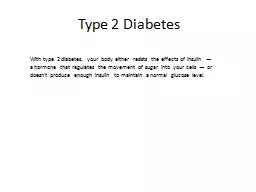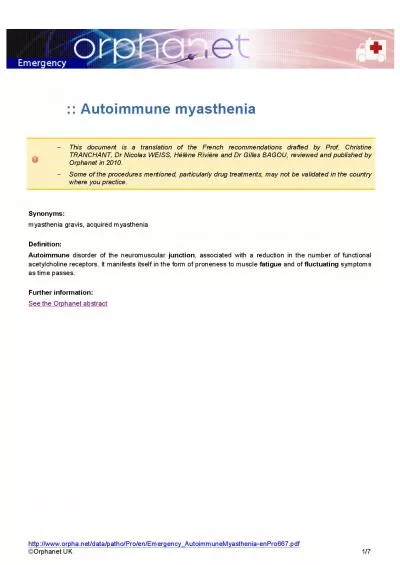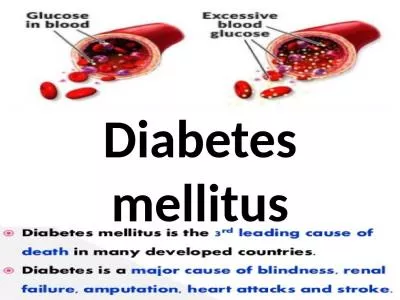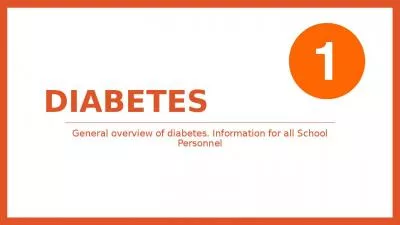PDF-All forms of diabetes have very serious effects on health In addition
Author : clara | Published Date : 2021-09-28
Figure 1 T1D Incidence Rates Worldwide 0510152025303540FINSARSWENORUSWIUSPAITAISRJAPCHIare being diagnosed with the T1D around the world each year Although the peak
Presentation Embed Code
Download Presentation
Download Presentation The PPT/PDF document "All forms of diabetes have very serious ..." is the property of its rightful owner. Permission is granted to download and print the materials on this website for personal, non-commercial use only, and to display it on your personal computer provided you do not modify the materials and that you retain all copyright notices contained in the materials. By downloading content from our website, you accept the terms of this agreement.
All forms of diabetes have very serious effects on health In addition: Transcript
Download Rules Of Document
"All forms of diabetes have very serious effects on health In addition"The content belongs to its owner. You may download and print it for personal use, without modification, and keep all copyright notices. By downloading, you agree to these terms.
Related Documents














